
The Gaelic revival was the late-nineteenth-century national revival of interest in the Irish language and Irish Gaelic culture. Irish had diminished as a spoken tongue, remaining the main daily language only in isolated rural areas, with English having become the dominant language in the majority of Ireland.

John Brewster Hattendorf, D.Phil., D.Litt., L.H.D., FRHistS, FSNR, is an American naval historian. He is the author, co-author, editor, or co-editor of more than fifty books, mainly on British and American maritime history and naval warfare. In 2005, the U.S. Naval Institute Proceedings described him as "one of the most widely known and well-respected naval historians in the world." In reference to his work on the history of naval strategy, an academic in Britain termed him the "doyen of US naval educators." A Dutch scholar went further to say that Hattendorf "may rightly be called one of the most influential maritime historians in the world." From 1984 to 2016, he was the Ernest J. King Professor of Maritime History at the United States Naval War College in Newport, Rhode Island. He has called maritime history "a subject that touches on both the greatest moments of the human spirit as well as on the worst, including war." In 2011, the Naval War College announced the establishment of the Hattendorf Prize for Distinguished Original Research in Maritime History, named for him. The 2014 Oxford Naval Conference - "Strategy and the Sea" - celebrated his distinguished career on April 10–12, 2014. The proceedings of the conference were published as a festschrift. In March 2016, Hattendorf received the higher doctorate of Doctor of Letters (D.Litt.) from the University of Oxford. Among the few Americans to have received such designation, Hattendorf remained actively engaged on the Naval War College campus after his formal retirement in 2016.
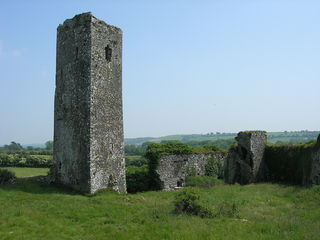
Ballincollig is a suburban town within the administrative area of Cork city in Ireland. It is located on the western side of Cork city, beside the River Lee on the R608 regional road. In 2016 it was the largest town in County Cork, at which time the Ballincollig Electoral Division had a population of 18,621 people. It is located beyond the green belt from the suburbs of Bishopstown and Wilton. Historically home to the Ballincollig Royal Gunpowder Mills which is now a Regional Park, the town has seen much growth in recent years as a satellite of Cork City. Ballincollig is within the Cork North-West Dáil constituency.
Events from the year 1920 in Ireland.
Events from the year 1919 in Ireland.
Gerard A. Hayes-McCoy (1911–1975) was an Irish historian regarded as one of the leading Irish historians of his generation.

The Battle of Benburb took place on 5 June 1646 during the Irish Confederate Wars, the Irish theatre of the Wars of the Three Kingdoms. It was fought between the Irish Confederation under Owen Roe O'Neill, and a Scottish Covenanter and Anglo-Irish army under Robert Monro. The battle ended in a decisive victory for the Irish Confederates and ended Scottish hopes of conquering Ireland and imposing their own religious settlement there.

The Battle of the Yellow Ford was fought in County Armagh on 14 August 1598, during the Nine Years' War in Ireland. An English army of about 4,000, led by Henry Bagenal, was sent from the Pale to relieve the besieged Blackwater Fort. Marching from Armagh to the Blackwater, the column was routed by a Gaelic Irish army under Hugh O'Neill of Tyrone. O'Neill's forces divided the English column and a large earthwork stalled its advance. Bagenal was killed by an Irish musketeer, and scores of his men were killed and wounded when the English gunpowder wagon exploded. About 1,500 of the English army were killed and 300 deserted. After the battle, the Blackwater Fort surrendered to O'Neill. The battle marked an escalation in the war, as the English Crown greatly bolstered its military forces in Ireland, and many Irish lords who had been neutral joined O'Neill's alliance.

Terence James MacSwiney was an Irish playwright, author and politician. He was elected as Sinn Féin Lord Mayor of Cork during the Irish War of Independence in 1920. He was arrested by the British Government on charges of sedition and imprisoned in Brixton Prison. His death there in October 1920 after 74 days on hunger strike brought him and the Irish Republican campaign to international attention.

Spike Island is an island of 103 acres (42 ha) in Cork Harbour, Ireland. Originally the site of a monastic settlement, the island is dominated by an 18th-century bastion fort now named Fort Mitchel.
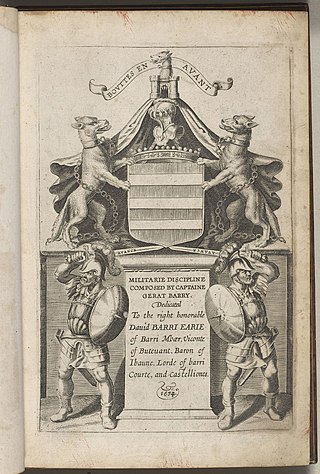
Garret Barry, also called Gerat, was an Irish soldier and military writer, who fought for Spain in the Eighty Years' War and then for the Irish insurgents in the Rebellion and the Confederate Wars. When young he left Kinsale at its surrender in 1602 for Spain where he took service, first as marine in the Atlantic Fleet and then in the Army of Flanders. While in Spanish service, he fought at the Siege of Breda in 1624/1625. He retired with the rank of captain in 1632. Returning to Ireland he was at the Rebellion appointed general of the insurgents' Munster Army. He took Limerick in June 1642 but was defeated at Liscarroll by Inchiquin in September. He was confirmed as General of the Munster Army by the Irish Catholic Confederation but was in practice superseded by Castlehaven in 1643.

The Cork Constitution (CC) is a rugby union club based in Cork, playing in Division 1A of the All-Ireland League. It was founded by staff of the Cork Constitution newspaper. Since the paper did not publish on Sundays, the staff were looking for activities to pursue on Saturday afternoons. In the summer, cricket was played, while in the winter, rugby was the designated activity. The team currently plays in Temple Hill, Ballintemple.
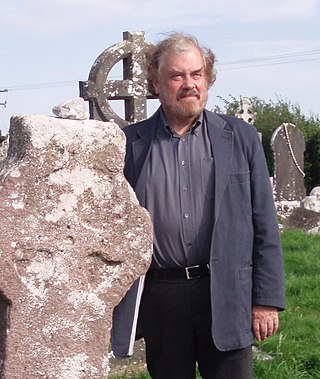
Peter Berresford Ellis is a British historian, literary biographer, and novelist who has published over 98 books to date either under his own name or his pseudonyms Peter Tremayne and Peter MacAlan. He has also published 100 short stories. Under Peter Tremayne, he is the author of the international bestselling Sister Fidelma historical mystery series. His work has appeared in 25 languages.

Kevin Danaher was an Irish folklorist with a special interest in ethnography and military history.
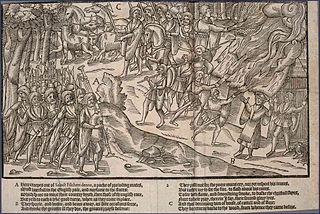
A kern was a Gaelic warrior, specifically a light infantryman, in Ireland in the late Middle Ages.
Nicholas Patrick Canny is an Irish historian and academic specializing in early modern Irish history. He has been a lecturer in Irish history at the University of Galway since 1972 and professor there from 1979 to 2011. He is Emeritus Professor of History, University of Galway.
The Military History Society of Ireland promotes the study of military history, and in particular the history of warfare in Ireland and of Irishmen in war. The Honorary Patron is the President of Ireland, Michael D. Higgins.
Cork Prison is an Irish penal institution on Rathmore Road, Cork City, Ireland. It is a closed, medium security prison for males over 17 years of age, with capacity for 275 prisoners. It is immediately adjacent to Collins Barracks and near the Glen area of the city.
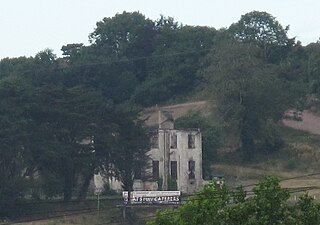
Vernon Mount is a ruined Georgian manor house in Cork, Ireland. It was built between the 1780s and early 1790s to designs attributed to Abraham Hargrave. Originally built for the merchant Hayes family, the house was named for Mount Vernon, the home of US president George Washington. Passing through several owners, the house remained largely disused and subject to deterioration from the late 20th century. It was included in the Record of Monuments and Places by the National Monuments Service, and on the Record of Protected Structures for Cork County Council. It remained largely intact until 2016, when a significant fire largely gutted the house, and the building was subsequently listed on the derelict sites register. In 2021, the building was subject to a funding request for stabilisation works due to "risk of collapse".
The Irish Historical Research Prize is a history book prize awarded biannually since 1922 by the National University of Ireland (NUI) to a senior historian for the best new work of research on any period in the history of Ireland. It is considered the most prestigious prize in the study of Irish history.












